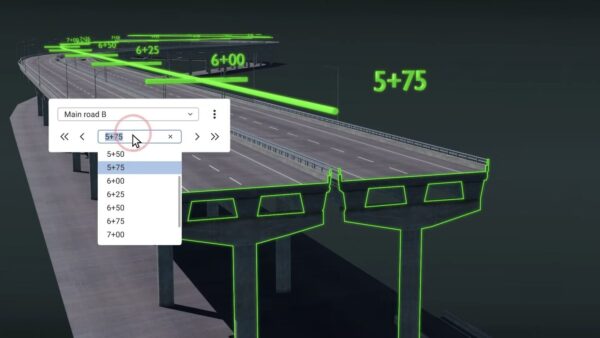Do you ever feel stuck in a vortex of impenetrable jargon and tech-speak that numbs your vital senses and destroys your confidence? You’re not alone, says Sarah Fox.
Impenetrable jargon. Despite my (ahem) 20+ years’ experience with construction contracts that’s how I felt about BIM. I was baffled by even the basic concepts, largely because I found its language impenetrable.
I know I am not alone. The Winfield Rock Report, Overcoming the Legal and Contractual Barriers of BIM, reported that BIM aficionados expressed “sympathy for lawyers having to wade through endless jargon”.
That sentence brought a wry and knowing smile to my face. In my quest to create simple and effective contracts, I learnt a great deal about the perils of jargon and I regularly deliver workshops to help a project team wade through the endless legal jargon in construction contracts.
The key principle with jargon is that it should assist with understanding, not create a private space where others fear to tread.
It’s like those in the know, the early adopters of BIM, wanted to exclude those not-yet-in-the-know…. a form of snobbery, if you like, or “a mark of belonging to a [BIM] club”. It might have started harmlessly enough, but it has become seriously off-putting.
On top of the jargon, there are endless initialisms and acronyms. These make it very hard for dyslexics to follow: from BIM itself (how we laughed as someone said BIM modelling, cracking open the PIN number golden oldie), CAD, PAS 1192, 3D collaborative BIM (which may or may not be the same as BIM Level 2), EIR, PIM/AIM, BEP, CDE, MPDT… Some of the publishers of standard forms don’t even use the common acronyms but invent their own, just to add to the confusion.
This is serious, critical even. Unless everyone involved in a project, from advisers to users to dispute resolvers, can understand the role and importance of each of these BIM elements, how can we possibly make informed decisions and take suitable action?
Triple double whammies
When BIM first reared its head, like a digital Medusa ready to turn me to stone, I was a private practice lawyer, baffled by the legal complexities that BIM was raising.
My rather naïve view was that project teams had been sharing information since the Middle Ages – none of those gothic cathedrals were built by one person keeping the design to himself! And that perhaps lawyers should spend less time drafting yet more amendments and making work for themselves, and more time seeking to understand the concepts.
Thankfully, not all lawyers took that approach. As David Philp says in his foreword to the Winfield Rock Report “the inconvenient truth is that we very much need our lawyers and commercial communities positively engaged with BIM to help industry navigate the various obligations, liabilities and limitations presented in the world of BIM Level 2”.
So here’s our first double whammy – a heady combination of lawyers and technicians, both steeped in jargon, technical idioms and specialist expertise. This led to a cornucopia of BIM acronyms and language and resulted in a lack of brevity and simplicity.
I wasn’t surprised to read that one of the key conclusions of the Winfield Rock Report is that “each of the industry experts [not just the hoi polloi] provided a different definition of BIM Level 2. No two people gave the same response.”
This creates another double whammy – because there is no common understanding of what BIM requires, non-users cannot grasp its efficacy and benefits. A vicious cycle that gets worse as BIM matures, with more acronyms, less understanding, and higher barriers to later adopters.
For a contracts specialist like me, the critical aspect is that where the client or project team do not properly understand the impact of BIM, or they each understand it in their own way, it is impossible to create contracts, protocols and documents which clearly record that understanding. Lack of clarity will – as the Report notes – potentially lead to disputes, as contracts fail to clarify risks, manage expectations, or lead to consensus.
This failure by the lawyers to grasp the legal implications creates the third double whammy – lawyers cannot ask the right questions of their client and its technical team to reflect BIM properly in the project contracts.
I spend my life writing and reviewing contracts to ensure they do not contain ambiguities, inconsistencies and misunderstandings. But if no one can agree what BIM Level 2 looks like, how can the lawyers accurately record the roles, responsibilities and deliverables for implementing it?
BIM, as represented in contracts, lacks accuracy, brevity and clarity: it’s far from simple.
Getting to grips
Instead of sticking our heads up our BIMs, I suggest you read the Winfield Rock Report or head to the B1M website.
The report helpfully explains the initialisms and acronyms (Appendix 3) and sets out a list of questions to understand what BIM functionality your project needs (Appendix 4).
When it comes to implementing BIM, the report says that the EIR (Employer’s Information Requirements) is the “fundamental starting point for the BIM project as it sets out what the employer actually requires”.
The B1M website has a special section on BIM for beginners for those of us who need to get up to speed quickly. It has a list of the 10 most commonly used acronyms, videos and resources to broaden your knowledge of a key part of the government’s construction strategy.
Jargon and joking aside, the digital revolution in construction is coming and you really don’t want to be left behind.
Sarah Fox is an author, speaker and contract strategist and owner of 500 Words Ltd http://500words.co.uk

It’s like those in the know, the early adopters of BIM, wanted to exclude those not-yet-in-the-know…. a form of snobbery, if you like, or ‘a mark of belonging to a [BIM] club’. It might have started harmlessly enough, but it has become seriously off-putting.– Sarah Fox














